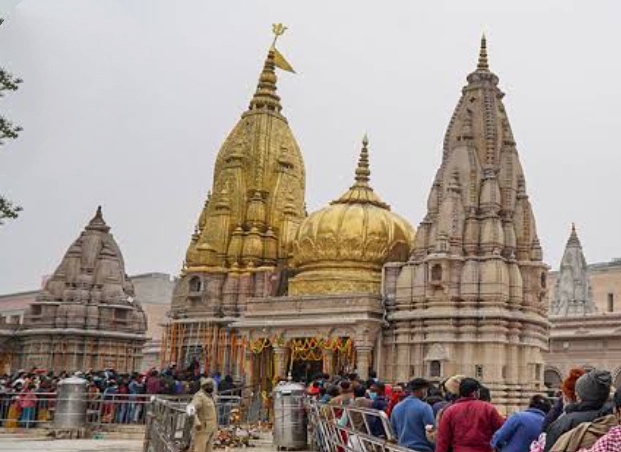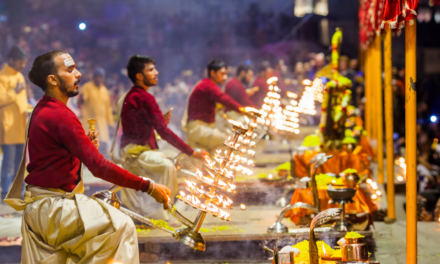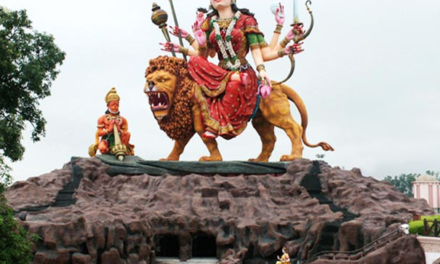Kashi Vishwanath is one such sacred temple dedicated to Lord Shiva and most valuable temple for Hindu devotees in India. This temple which is located in Varanasi (Kashi) has been a centre of faith and devotion to millions of pilgrims from far away places across the globe. The temple is not just a religious spot; it forms part of cultural and historic fabric that has come to characterize India. In the previous years redevelopment of Kashi Vishwanath Corridor has revitalized this holy place with increased accessibility and space.
Historical Significance of Kashi Vishwanath
The Kashi Vishwanath Temple is now one of the oldest temples in Indian history, dating back thousands and thousands years. An image from the ancient scriptures such as the Skanda Purana — Varanasi; (the city itself referred to as spiritual capital of India). The temple has been demolished and reconstructed a number of times; its present form was built in 1780 by Ahilya Bai Holkar, the queen of Maratha Empire.
The temple is dedicated to Vishwanath, one of the forms of Shiva or the God of all universe. The Jyotirlinga housed in the temple is one of twelve jyotirlingas, said to be the holiest Shiva temples. This temple is said to provide moksha when a pilgrim visits it and takes bath in the holy Bhagirathi river.
The Kashi Vishwanath Corridor Project
In December 2021 the Kashi Vishwanath Corridor, a visionary project, was inaugurated to transform the temple complex and its nearby vicinity. The 5 lakh sq ft long corridor linking the temple to Ganga makes it easier for pilgrims. This included acquisition of over 300 properties and relocating about 1400 families, opening up pedestrian-friendly wide pathways to allow elderly/specially-abled people easy access to the temple.
The goal of this redevelopment project was not only physical improvement but also adding to and preserving the cultural heritage of region. A rediscovery and restoration have taken place for several ancient temples hidden within the high-density. There are museums, viewing galleries and a facilitation center in the corridor that will provide an exhaustive spiritual as well as cultural experience to visitors.
Impact on Tourism and Local Economy
Varanasi has seen an unprecedented rise in tourism ever since the completion of Kashi Vishwanath Corridor. Sources say, number of tourists arriving at Varanasi is ten times that witnessed prior to the pandemic and said millions are coming for a first-hand experience of newly transfigured temple complex.
The surge in the number of tourists has propelled a substantial growth to local business including hospitality. Businesses — especially hotels, restaurants and shops in the area are seeing a dramatic increase as visitors flock to our shores with some establishments packed out. This has caused the property prices near the temple to rise, a reflection of its greater relevance.
Still, the tourist boom has not come without some problems. As a result of being so popular, there are now more cars on the roads leading up to Santorini and much higher levels of air pollution; something that locals have been warning about for some time. While the advantages like tourism are unquestionable, a question remains about how to balance tourist demands with happy community needs.
Cultural and Spiritual Revival
The corridor has brought about a physical change and also renewed the faith of Varanasi in itself. The temple and the ghats around have developed into hubs for unique cultural/religious events. The ritual worship of the Ganges river, known as “Ganga Aarti”, which is held every day has become a huge draw with thousands of devotees and tourists in attendance.
The project also has had a major role to play in promoting the traditional heritage of Varanasi. Designed to bring the arts, music and culture within reach of all in Birmingham’s corridor of creativity, its newly constructed museums and galleries are dedicated to continuing that legacy as much for everyone involved feel immersed in the history. In addition, this cultural renaissance has done much to cement Varanasi’s place as an important hub for spiritual and cultural tourism.
Challenges and Controversies
The Kashi Vishwanath Corridor is indeed a success story. Several families whose land and properties were acquired for the project faced displacement, leading to protests and legal battles. Critics say the site risks losing its religious significance and will lead to commercialization of not just that location, but also associated areas — making way for tourists and trade outlets potentially diluting the legacy.
The project is also unlikely to stir up worries about pollution levels in the Ganges—the river, which faces increased visitor numbers due to its nearness to Varanasi and other pilgrimage towns. The balancing act also reflects a well-traveled path to navigating into maturity as the temple continues its upward trajectory in popularity while it strives — or should strive, and if not must at least try badly enough, so my opinion goes— to do appropriate stewardship of neighboring environmental and cultural resources.
Also Read: Explore Mystical Charm of Vindhyachal: A Comprehensive Guide
Conclusion
With a history of centuries and distant past the Kashi Vishwanath Temple, is still plays a important role as faith for crore people. Benares is also home to the Kashi Vishwanath Temple and canalization project being undertaken by UP chief minister Yogi Adityanath, further bolstering its status as a destination while making this integral part of one of India greatest architectural wonders in design philosophy more accessible for visitors to navigate. The project has its benefits and continues to present opportunities in the form of tourism growth, alongside economic development; however these challenges also need to be met forthrightly as we are committed through balancing visiting with sustainable living in this area.
The Kashi Vishwanath temple is the main site of this transformation in Varanasi, representing India’s eternal spiritual and cultural heritage. Kashi Vishwanath rekindle age-old traditions of India, for spiritual solace seekers or just those looking to connect with the divine — it is a journey through time like none other.










